09 Dec Year-End Tax Considerations for Benefits
About The Author
 Drew Thirion- Commercial and Benefits Risk Advisor
Drew Thirion- Commercial and Benefits Risk Advisor
As a Commercial and Benefits Risk Advisor, Drew specializes in sales and client service, generating new business opportunities while ensuring tailored solutions to each client’s unique employee benefits needs and requirements.
As the end of the year approaches, it’s a good time for both employers and employees to consider important tax-related aspects of their benefits packages. Let’s look at some key year-end tax considerations that can help maximize tax advantages and ensure compliance with regulations.
FSA Deadlines
Flexible Spending Accounts (FSAs) are a popular benefit that allows employees to set aside pre-tax dollars for eligible healthcare expenses. Typically, these accounts have a strict “use it or lose it” policy.
Most FSA plans have a December 31st deadline for using funds, though some may offer a grace period. Before the end of the year, it’s essential to:
- Remind employees to check their FSA balances
- Encourage employees to use remaining funds for eligible expenses
- Inform employees about any available grace period options
Consider scheduling last-minute medical appointments or purchasing eligible items to help employees avoid forfeiting their hard-earned money.
Maximizing HSA Contributions
Health Savings Accounts (HSAs) offer a tax advantage: contributions are tax-deductible, grow tax-free, and can be withdrawn tax-free for qualified medical expenses. Unlike FSAs, HSA funds roll over year to year.
HSA contribution limits for 2024:
- Individual coverage: $4,150
- Family coverage: $8,300
HSA contribution limits for 2025:
- Individual coverage: $4,300
- Family Coverage: $8,550
Encourage employees to maximize their HSA contributions before year-end to take full advantage of the tax benefits. This time is also a good time for employers to review their contribution strategy to see if there’s a way to enhance the package.
ACA Reporting Requirements
The Affordable Care Act (ACA) mandates certain reporting requirements for employers.
Form 1095-C/1095-B statements are sent to eligible employees that describe the coverage offered to them.
-
- Form 1095-C: Applicable Large Employers (ALEs) with 50 or more full-time equivalent employees must provide this form to each full-time employee by January 31, 2025.
- Form 1094-C: This is the transmittal form that accompanies copies of Form 1095-C sent to the IRS.
- Form 1095-B: Insurers and some self-insured small employers use this form to report health coverage information.
- Form 1094-B: This transmittal form accompanies copies of Form 1095-B that are sent to the IRS.
As we come up on the end of the year, it’s important to remain compliant to these obligations:
Forms 1095-C/1095-B must be furnished to employees by March 3, 2025, for the 2024 calendar year. Also, these forms must be filed with the IRS, using transmittal Form 1094-C/1094, by March 31, 2025, if filing electronically.
Employee Education
Clear communication is vital to helping employees make the most of their benefits. Consider hosting a year-end benefits informational meeting or sending out communications covering:
- FSA deadlines and spending strategies
- HSA contribution limits and tax advantages
- The importance of reviewing beneficiary designations
- Upcoming changes to benefits
By going through year-end tax considerations like reviewing FSA deadlines, maximizing HSA contributions, and ensuring compliance with ACA reporting requirements, you can make the most of your benefits packages. As you move into the new year, focus on enhancing benefits offerings to better support your organization.
If you have questions about these considerations, reach out to me or contact one of our talented Risk Advisors today!


No Comments